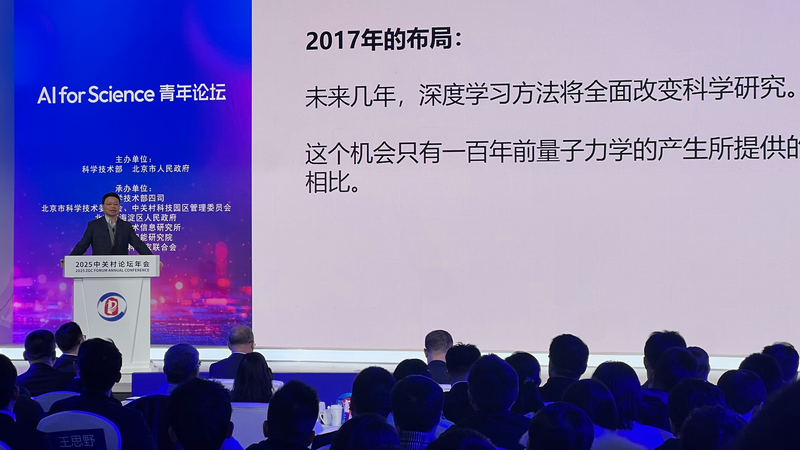At the 2025 Zhongguancun Forum, a gathering of global tech leaders and researchers, experts debated a fundamental question: Can artificial intelligence transform not just scientific tools but the very process of discovery? The answer, according to keynote speaker E Weinan, lies in systemic innovation. "We must integrate data, computing power, and talent to create AI models specifically designed for science," said E, a leading computational mathematician.
The forum highlighted China\u2019s strategic push in AI-driven research. Since 2017, when the country first prioritized "AI for Science" (a term without a direct Chinese translation), institutions like the Shanghai Artificial Intelligence Laboratory have focused on optimizing AI infrastructure. Zhou Bowen, the lab\u2019s director, stressed that while current large language models (LLMs) enhance research tools, \u201ctrue revolution requires end-to-end solutions bridging theory and application."
Beijing-based DP Technology showcased a breakthrough: an automated platform enabling cross-disciplinary experiments. Its Bohrium Scientific Computing Space Station and Science Navigator AI aim to accelerate advancements in drug discovery and energy technologies. "This systemic approach will break R&D bottlenecks," said founder Zhang Linfeng, citing potential 50% reductions in pharmaceutical development timelines.
A new report by the China Institute of Science and Technology Information revealed China and the U.S. lead in collaborative AI-for-science research, with life sciences and materials science as top fields. However, challenges persist, including fragmented data formats and limited access to sensitive datasets across China\u2019s 20 national scientific data centers.
As cross-border collaboration grows, experts urge shared frameworks to harness AI\u2019s full potential. For investors and policymakers, the message is clear: the next scientific revolution hinges on merging human ingenuity with machine scalability.
Reference(s):
AI for Science: Bridging the gap between tools and systemic innovation
cgtn.com








